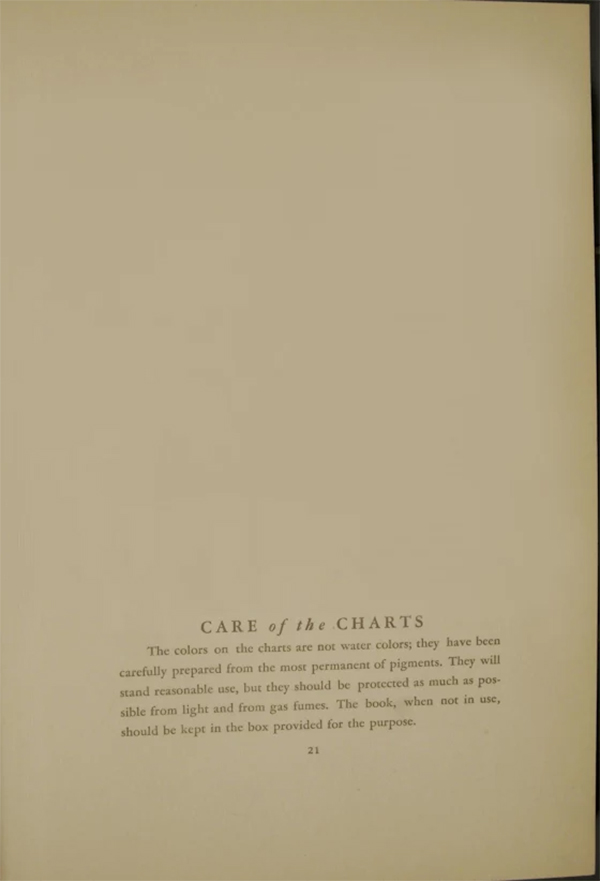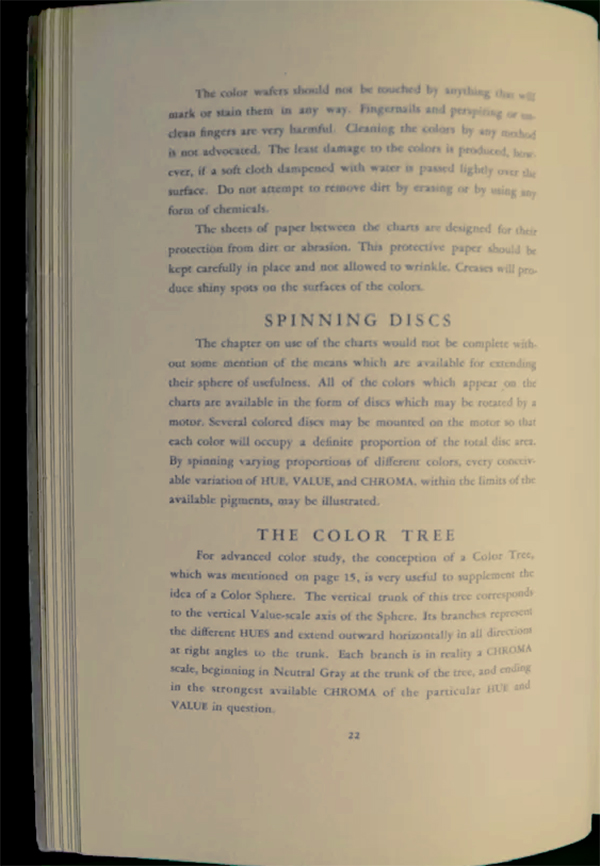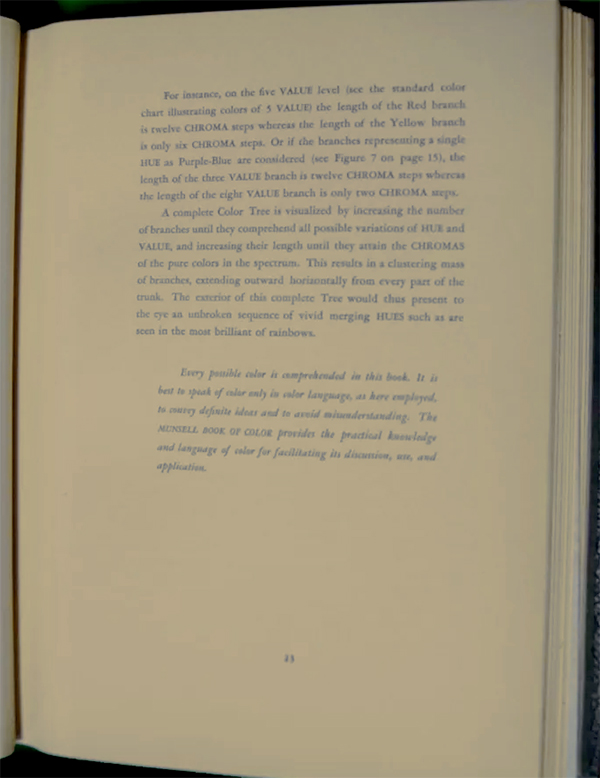
This section of the 1st edition of the Munsell Book of Color from 1929 discusses the care of the color charts, spinning discs and the color tree.
The colors on the charts are not water colors; they have been carefully prepared from the most permanent of pigments. They will stand reasonable use, but they should be protected as much as possible from light and from gas fumes. The book, when not in use, should be kept in the box provided for the purpose.
The color wafers should not be touched by anything that will mark or stain them in any way. Fingernails and perspiring or unclean fingers are very harmful. Cleaning the colors by any method is not advocated. The least damage to the colors is produced, however, if a soft cloth dampened with water is passed lightly over the surface. Do not attempt to remove direct by erasing or by using any form of chemicals.
The sheets of paper between the charts are designed for their protection from dirt or abrasion. This protective paper should be kept carefully in place and not allowed to wrinkle. Creases will produce shiny spots on the surfaces of the colors.
Spinning Discs
The chapter on the use of the charts would not be complete without some mention of the means which are available for extending their sphere of usefulness. All of the colors which appear on the charts are available in the form of discs which may be rotated by a motor. Several colored discs may be mounted on the motor so that each color will occupy a definite proportion of different colors, every conceivable variation of HUE, VALUE, and CHROMA, within the limits of the available pigments, may be illustrated.
The Color Tree
For advanced color study, the conception of a Color Tree, which was mentioned on page 15, is very useful to supplement the idea of a color sphere. The vertical trunk of this tree corresponds to the vertical Value-scale axis of the Sphere. Its branches represent the different HUES and extend outward horizontally in all directions at right angles to the trunk. Each branch is in reality a CHROMA scale, beginning in Neutral Gray at the trunk of the tree, and ending in the strongest available CHROMA of the particular HUE and VALUE in question.
For instance, on the five VALUE level (see the standard color chart illustrating colors of 5 VALUE) the length of the Red branch is twelve CHROMA steps whereas the length of the Yellow branch is only six CHROMA steps. Or if the branches representing a single HUE as Purple-Blue are considered (see Figure 7 on page 15), the length of the three VALUE branch is twelve CHROMA steps whereas the length of the eight VALUE branch is only two CHROMA steps.
A complete Color Tree is visualized by increasing the number of branches until they comprehend all possible variations of HUE and VALUE, and increasing their length until they attain the CHROMAS of the pure colors in the spectrum. This results in a clustering mass of branches, extending outward horizontally from every part of the trunk. The exterior of this complete Tree would thus present to the eye and unbroken sequence of vivid merging HUES such as are seen in the most brilliant of rainbows.
Every possible color is comprehended in this book. It is best to speak of color only in color language, as here employed, to convey definite ideas and to avoid misunderstanding. The MUNSELL BOOK OF COLOR provides the practical knowledge and language of color for facilitating its discussion, use and application.



Check out the other sections of the Munsell Book of Color:
The Munsell Book of Color: Foreward by F.G. Cooper
The Munsell Book of Color 1929: Preface by A.E.O. Munsell
The Munsell Book of Color 1929: Hue, Value, and Chroma
The Munsell Book of Color 1929: The Color Sphere
The Munsell Book of Color 1929: The Charts
The Munsell Book of Color 1929: Use of the Charts



It would be so great if I could afford a color tree – love learning, love this site, always read and study Munsell every opportunity provided, but reality is reality. You are not too affordable unfortunately. Thank you for such a great site for learning.